Fertilizer for aloe at home
Basic rules for using fertilizers for aloe
But do not forget that any care of the plant, in particular, feeding for aloe, will be useful only with the right approach to this seemingly simple matter.
When carrying out the fertilization procedure, the following points must be taken into account:
- Only completely healthy plants are recommended to be fed with fertilizers. Flowers that are diseased or damaged by pests must first be cured, since, due to their condition, they will still not be able to assimilate the micronutrients received through the roots.
- In no case should you fertilize the soil of recently transplanted plants, because fresh soil still contains a lot of nutrients. In addition, the roots of flowers after transplanting are very vulnerable and they are easy to burn with the applied fertilizer. The procedure for feeding the transplanted aloe can be carried out after 6 months from the date of transplantation or after the appearance of new shoots.
- To avoid burns on the leaves and stems of aloe, fertilizer is most often applied in the evening or on a cloudy day. The next day, it will be helpful to sprinkle the leaves of the plant with warm water in the morning and evening.
- Before applying any fertilizer, the soil must be thoroughly watered so that no dry soil remains. Otherwise, during the feeding procedure, the root system and, as a result, the entire flower may suffer.
- Aloe planted in a special soil mixture for cacti and other succulents is not recommended to be fed, since a high concentration of beneficial trace elements can cause a negative effect.
- Top dressing is necessary during periods of plant growth activation, namely from May to September. At the same time, it is necessary to fertilize the plants periodically once every 2-2.5 weeks.
- When buying a plant during the growth period, fertilizers should be applied 2-3 weeks after purchase, when the aloe has passed a period of acclimatization in new conditions.
- To contribute fertilizers for flowers best of all in liquid form from below, pouring into a tray, or from above, onto damp soil, carefully making sure that the dressing does not fall on the leaves or stems of the agave.
An important principle in caring for aloe, including with the help of fertilizers, is that all the best is needed in moderation.
When feeding aloe, it is important not to overdo it with the amount of fertilizer applied, because sometimes it is better to underfeed than to enrich the soil of plants with too many useful microelements. Therefore, it should be remembered that any fertilizer should be applied in exactly the doses indicated in the instructions, and strictly follow the recommendations.
You can buy fertilizer today in almost every specialized store, which offers a rich assortment of fertilizers for home plants and horticultural crops. Often, the use of garden fertilizers can lead to illness and even death of home aloe. Therefore, when buying, the main thing is not to save money, but to opt for those dressings that are intended for cacti and succulents.
If it was not possible to find such special fertilizers, when choosing suitable plant feeds, it should be taken into account that peat and any fertilizers made on its basis should never be added to the land in which the aloe is planted. And nitrogen-containing mineral fertilizers will be especially useful for the agave.
Fertilizer selection
Today, there is a huge variety of feedings for domestic plants, and, as mentioned above, you should stop your choice on special fertilizers intended for cacti and succulents. Let's list some of them that can be found in almost every store.
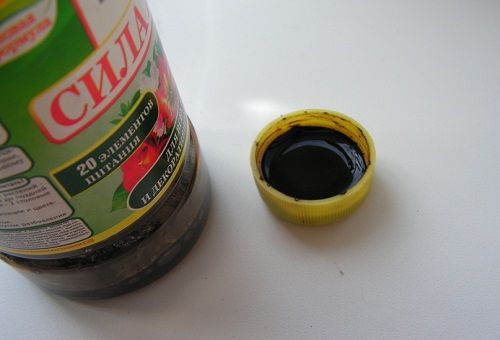
Complex organomineral fertilizer "Power of Life" for cacti and succulents
It is used for feeding cactus and various succulents, such as astrolobes, aloe, jerky, doodle, Kalanchoe and others.
Due to the content of many useful elements necessary for cacti and succulents, this complex fertilizer contributes to a balanced nutrition of flowers, as well as:
- Strengthens the root system of cacti and succulents.
- Provides the necessary amounts of micronutrients during plant growth.
- Reduces the acclimatization period after transplanting flowers.
- Increases the rate of metabolic processes in plant cells.
Fertilizer is presented in the form of a concentrated solution, which must be diluted before use in accordance with the instructions. For root dressing (during the period of active growth) with ordinary watering for aloe, use a solution of half a teaspoon of the concentrate in 10 liters of water. This preparation is not used for foliar feeding and during the dormant period of plants.
Bona Forte (Bona Forte) - fertilizer for cacti
Concentrated fertilizer in a liquid state, containing a complete complex of micronutrients, provides:
- Good nutrition for cacti and various succulents.
- Strengthening the processes of photosynthesis.
- Complete assimilation of useful microelements.
- Support and strengthening of flower immunity.
- Stimulation of active plant growth.
To obtain the best positive effect, it is recommended to combine root and foliar dressing with a concentrate solution prepared according to the instructions.
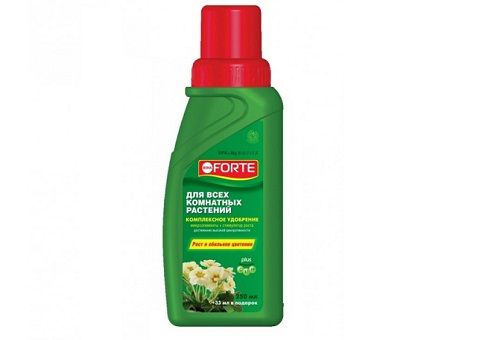
When feeding through the roots, use 5 ml of the drug, dissolved in 1.5 liters of water. During the period of active growth of aloe, root fertilizer is used every week, during the rest period - once a month. You can prepare a solution for spraying aloe leaves (foliar dressing) from 5 ml of concentrate and 3 liters of water.
The remaining prepared solution can be stored in a dark, cold place for no more than 14 days. After the expiration date, the concentrated fertilizer does not lose its beneficial properties.
Soluble fertilizer Agricola for cacti and succulents
The dry water-soluble fertilizer is suitable for all types of cacti and succulents. Thanks to the balanced complex of micro- and macroelements contained in its composition, the fertilizer meets the needs of plants in different periods of their growth.
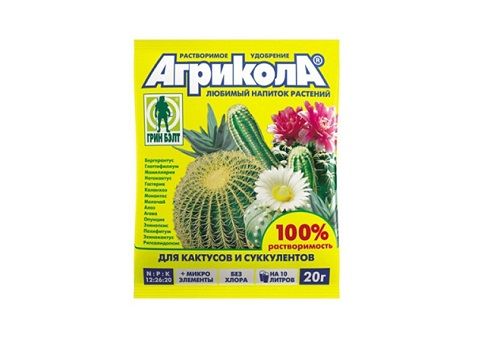
This fertilizer is suitable for root dressing of aloe. To prepare the solution, you need to take 2 - 2.5 grams of dry fertilizer granules and completely dissolve them in 1 liter of warm water.
The advantage of the presented top dressing is that dry fertilizers for flowers are very economical due to their high concentration. They have no expiration date.
Fertilizing aloe with home remedies
In addition to purchased ready-made fertilizers, some flower growers like to use various improvised fertilizers for feeding aloe at home, which can be found in almost every apartment, but often they are often simply disposed of. Here are some simple options for nutritional supplements for plant soil.
- Sugar. You can feed aloe with sugar once a week. For this method, 1 teaspoon of sugar is evenly distributed over the soil surface, after which the plant is regularly watered. You can also just water the soil with a solution of 2 teaspoons of white sugar and a glass of warm water.
- Eggshell. It will be especially useful as a supplement when using mineral fertilizers for plants, which noticeably increase the acidity of the soil. Before putting the shell into the ground, it must be thoroughly washed, dried and crushed very well. The shell decomposition rate is very slow, so it is often not recommended to apply it. Crushed shells can be poured with 3 liters of hot water and insisted for a week. Then you can water the agave with the resulting solution.
- Onion peel. Contains a useful component that destroys pathogenic microflora. A solution of 15 grams of husk and 6 liters of hot water is infused for at least 5 days, or boiled for about 3 minutes and infused for 2 hours. After that, the agent is used as a foliar dressing, spraying dust-free aloe leaves.
- Water from rinsing cereals. Many flower growers water aloe with water from washing rice, buckwheat and other cereals, which contains many trace elements useful for plants.
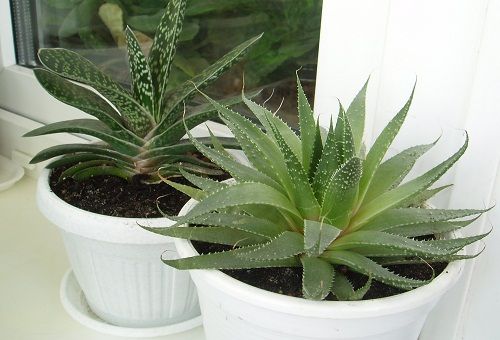
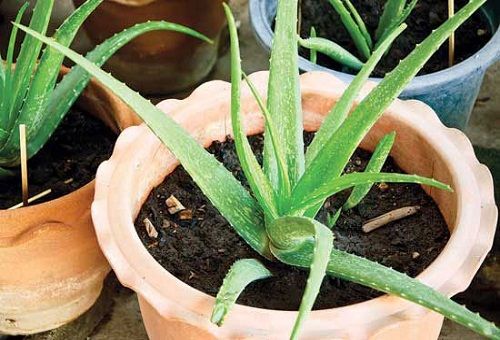
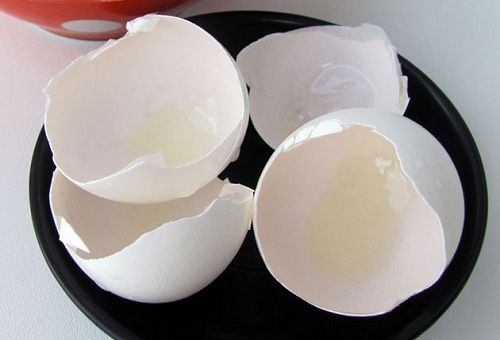
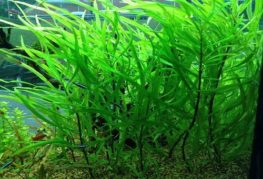
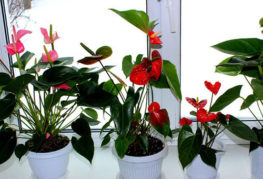

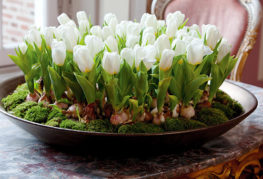
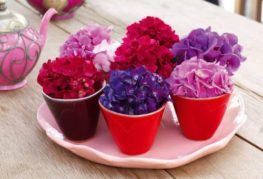
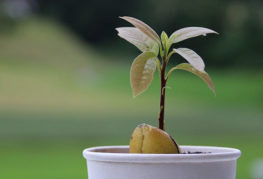
Thank! I am very grateful for the informative article and video. Now my alois will live a happy life. I learned a lot! Thank you again.
Thank you very much!! By the way, I have Aloe Vera growing and I didn't know how to feed this flower !!
thank you very much!?
THANK YOU SO MUCH! WE WILL FEED ALOE AND BE JOY
Thanks for the advice. Very helpful and accessible
Thanks a lot, we urgently need to start feeding this useful plant with home tricks. I learned about sugar for the first time. I want greasy leaves.